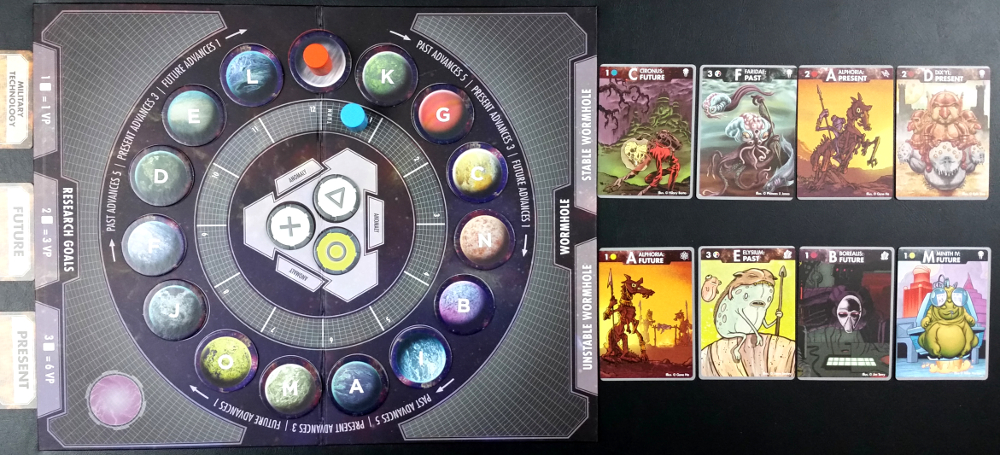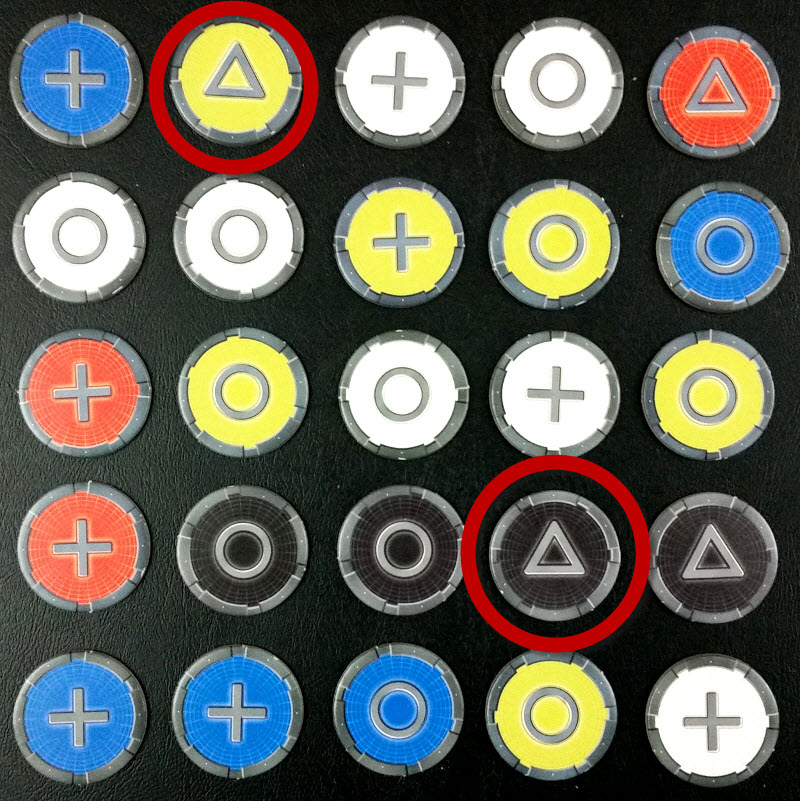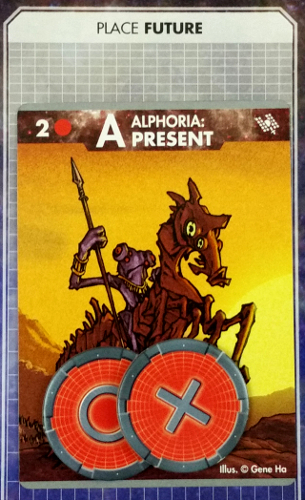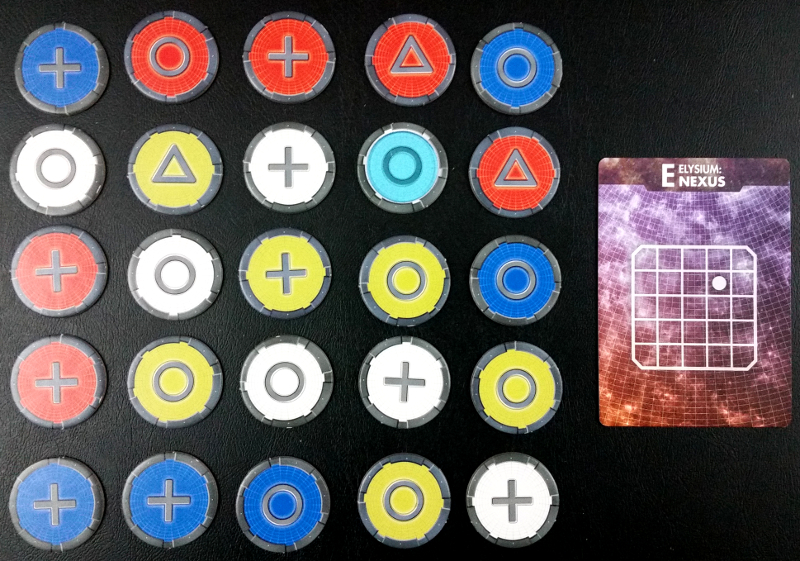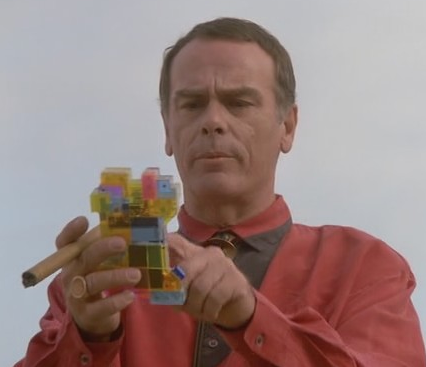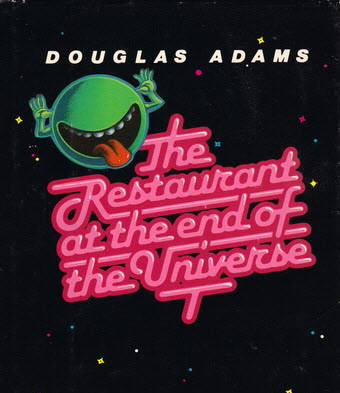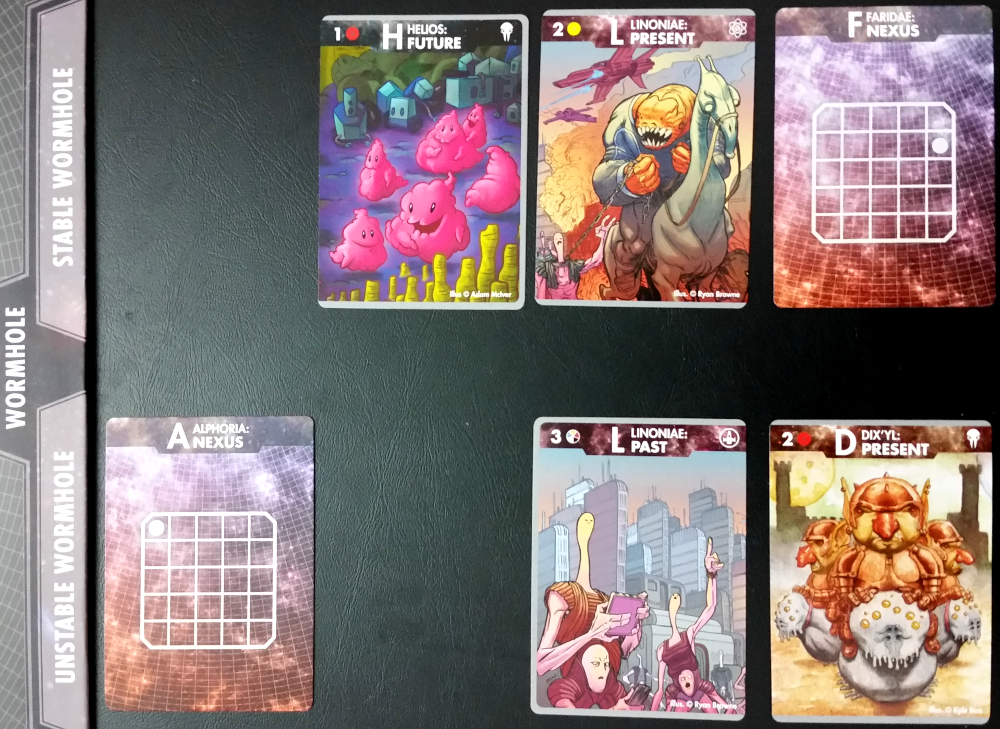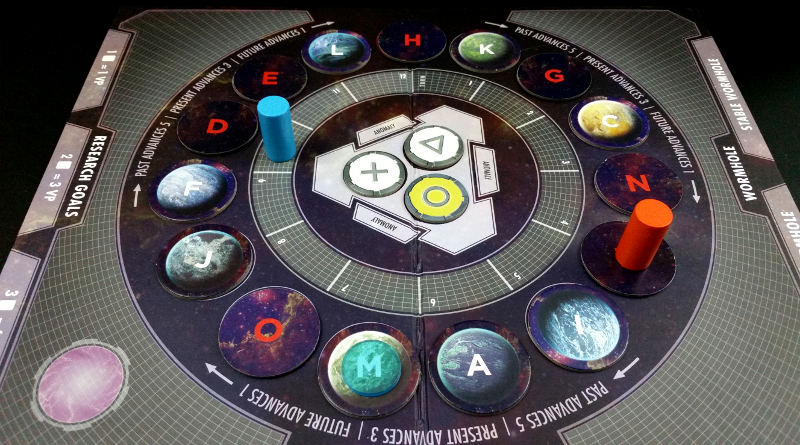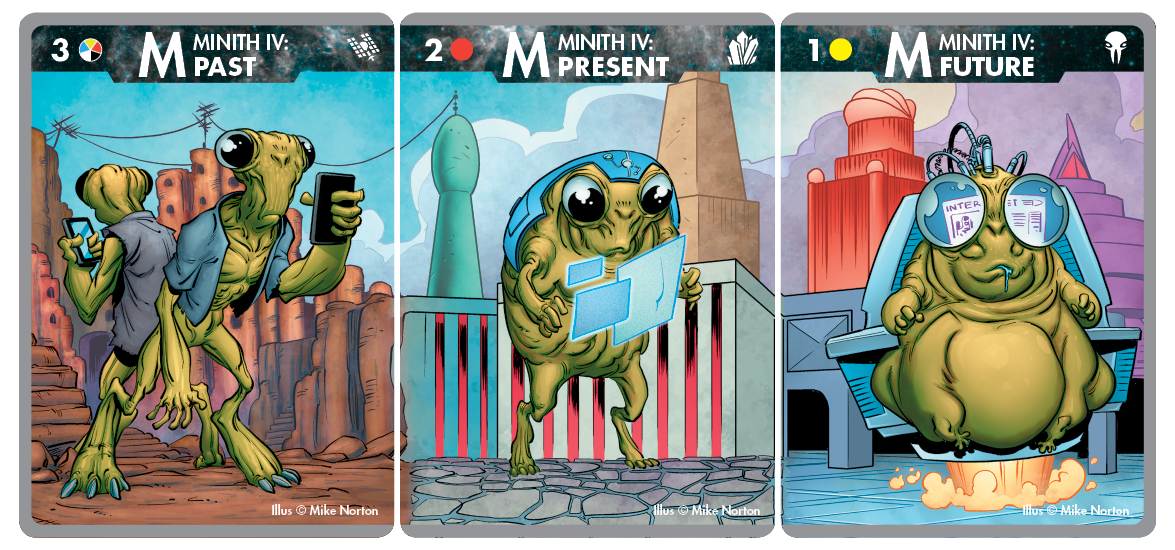At the near end of the Andromeda Galaxy once stood a long and storied civilization whose millennia of benevolent rule kept their part of the universe in relative peace and stability. As part of their activities, the ruling caste of the planet Crichton routinely sent out monthly subspace updates to every member planet within the galactic federation, spreading word on new research, social initiatives, and the results of exploratory envoys to new regions of space. Then, one day, the normally uniform message changed:
On the foundry world Prax, listeners received the desperate pleas for negotiators to end the homeworld’s decades of civil war.
On the planet Endith, listeners heard bombastic state-run propaganda railing against neighboring core planets.
On the deep space orbital relay station Reban, the message was received normally, raising no concern at all.
And on the vacation colony Xxyl, the inhabitants found only static…
The Premise
Thanks to reckless and irresponsible use of time travel, the fabric of the entire universe is coming undone at the hands of an unstable time-hopping event called the Quake. As scientists hoping to stitch the space-time continuum back together before it’s too late (and seeking a little fame in the process), players compete to repair the timelines of numerous worlds as a means of stopping the Quake for good.
The Rules
The universe of Paradox is in constant flux. As such, there is a lot of moving pieces in this set-matching game, consisting primarily of a central planet board, a deck of cards, player boards, and copious disc tokens. Setup is straightforward, but it requires moderate table space.
To begin, the central board is formed by randomly arranging its 15 planets. Three random Research cards are placed to the left of the board which provide endgame VP bonuses. To the right, the top eight cards from the deck are revealed to form two Wormhole rows.
Each player starts with a board and a 5×5 disc grid formed by drawing discs from a communal bag. Each disc consists of a color and one of three symbols. The last player – the Chief Scientist – is chosen randomly.
Paradox takes place over 12 rounds, each broken down into three phases: Wormhole, Matrix, and Cleanup.
During the Wormhole phase, each player selects a Wormhole card and adds it to their board. Most are Timeline cards of various worlds, consisting of the time it belongs to (Past, Present, or Future), as well as the resources needed to complete it. There also exists Nexus cards, which ‘lock’ a specific disc on a player’s grid when chosen and are only scored when a Strand containing that locked disc is created.
Next is the Matrix phase, which is where most of Paradox takes place. First, the player either swaps a disc within their grid or from the central board with another disc having the same symbol. This action is then repeated a second time.
If a line of four or more colored discs is formed from a swap, a Strand is created. Completed Strands are removed, generating 1-2 resources of that color which are added directly to Timeline cards. Any unlocked discs in the grid instantly drop down and replacement discs are drawn.
Once a Timeline has the resources needed, it is scored and removed. However, this also causes the Quake marker to jump along the planet track. When the Quake ends on a world it becomes Fractured, though players can spend black or white Strand resources to restore it.
To complete their turn, the player slides their Timeline cards one space to the right. If it slides off the board, it is lost.
Cleanup comes after each player has taken a turn. In it, the Wormhole decks are re-filled and the first player rotates. Then a new round begins.
After the 12th round, the game ends. At this point any completed cards belonging to Fractured worlds are discarded, as they no long exist. Players then score VP from their remaining cards, with sets of cards from the same world worth progressively more. Players gain additional VP from Research cards. The player with the most VP is the winner, becoming the hero and savior of all of existence – complete with all the perks.
Everyone else should probably just be happy they exist at all after this ordeal.
Unraveling The Puzzle
One of the primary reasons set-matching exercises are so widely enjoyed is because they reward us on an instinctual level. Humans have phenomenal pattern-recognition capabilities and the capacity to make informed decisions based on those patterns. We’ve come to like figuring out patterns. Paradox effortlessly taps into that reward center by way of the Matrix grid, a 5×5 array of pattern-matching potential.
This unique style of set-matching lies at the heart of Paradox, both mechanically and conceptually. Adopting a mechanic more commonly seen in casual video games, Paradox transplants the idea of grid manipulation into cardboard form without diminishing its inherent charm.
Beyond the simple pleasure of making sets, though, Paradox infuses this process with an abundance of purpose. It’s impressive the degree to which this game makes something as simple as a swapping a disc matter, and it also explains why your Matrix is so prominent in your tableau. Everything in Paradox hinges on being able to complete as many of the right Strands as possible, from finishing Timeline cards – and by extension Research goals – to rescuing planets from the Quake.
Therefore, although Paradox is not a complex game, it requires some mental processing. Since you can’t save resources between turns, you’re forced to not only gauge how you’re going to complete the right Strands but when. This creates a satisfying brain-burning activity of making simple-yet-vital spatial moves.
Paradox adds to that some light strategy in deciding which cards to pursue as well. You may have to decide, for instance, whether to diversify planet cards or focus on getting multiple cards from a few worlds. Multiple cards from the same planet are more valuable, but it also puts you at greater risk of losing due to Fractured worlds.
This dilemma coupled with the Wormhole rows and Matrix grid itself makes the game somewhat unpredictable, but it avoids devolving into abject randomness. Expect Daredevils to be on board for this mission. Architects too will appreciate Paradox’s sense of progression as you complete Timeline cards and try to put the universe back together.
It’s About Time
However, all of these modest mental calisthenics come with a cost, namely, in the form of player downtime. Paradox wants you to be proactive and plan as best you can for maximum efficiency. Yet its tableau-style setup limits your ability to do so.
Paradox is a fairly laid back affair – which is almost counter-intuitive for a game about the unmaking of existence. Indeed, while it deals with a catastrophic subject, Paradox is a quite casual game. Part of this is because of the game’s lightweight and easy to learn turn structure, making it quite accessible. Although the rule book is wordy at times, there aren’t a lot of complicated rules or confusing gameplay.
What’s more, even though you’re competing with one another, there’s very little direct conflict. Aside from choosing a card that another player wants or timing the completion of a Timeline such that the Quake Fractures a planet helping your opponent, the majority of your attention is inwardly focused.
Working against this otherwise concise presentation is the amount of waiting involved as each player takes their turn sequentially. This is especially evident with four players. Lulls are further compounded by the fact that while it’s possible (and encouraged) to map out the first part of your turn ahead of time, finite disc resources and the mercurial nature of your grid ensures that your options will often change from one action to the next, let alone between turns.
The result is a game with a leisurely pacing to it that Socializers will be enjoy. That is, so long as they don’t mind the time commitment; playthroughs of Paradox often take an hour or more to complete. They’ll appreciate the easygoing atmosphere of having time to converse between turns without heavily monitoring other players or having a dire sense of expediency looming overhead. Of course, it’s for these exact same reasons that Strikers should set their coordinates for another star system, as these conditions would only cause them to start rooting for the Quake instead.
Tacticians, however, are likely to be conflicted, coming down somewhere in between these two groups. On the one hand, the inability to plan long term and the inherent chaos can put a damper on their machinations.
On the other hand, Paradox still provides numerous decisions to make each round that may offset such concerns, such as figuring out which cards to claim, manipulating the Quake, or setting up your Matrix for bigger payouts later. Paradox forces you to make more turn-based decisions, but it still leaves space for adaption.
And if that isn’t enough, Paradox has a handful of optional modules to raise the complexity level slightly, which they’ll enjoy. This is one casual strategy game that many Tacticians should like, at least for a while.
Sixth Dimensional Rorschach
Ironically, the one major caveat to Paradox’s is that for a game about trying to save alien worlds, its biggest weakness revolves around the planets themselves.
While the game does an excellent job incentivizing players to pay attention to their individual disc Matrices and Timeline cards, the Quake track is comparatively underutilized for much of the game. Although its purpose is vitally important – dictating which cards will be worth anything at the end of the game – it’s not uncommon for it to be largely ignored until the last few rounds.
Because the Quake has no impact on an already Fractured world, there’s little imperative to shore up or shield planets until the later stages of the game unless you have the resources to spare. Not only does this remove some of the gravity of the central board itself, it also presents a rather mixed thematic message. Theoretically you could have 14 out of 15 worlds cease to exist and still considered a success so long as you have enough of the surviving world’s cards.
This is in stark contrast to how well represented the planets are otherwise. Worlds in Paradox are depicted via their Timeline cards, which when combined form clever three-card murals. Each of the 15 named worlds are illustrated by 15 different artists, giving every world a unique and distinctive style. This not only provides a diverse array of imperiled planets throughout the game but when mixed together deftly conveys the idea of a jumbled space-time continuum coming apart at the seams.
This means Paradox’s theme can be somewhat inconsistent at times, much to the chagrin of Immersionists. This group will certainly be intrigued thanks to a sound premise and excellent visual flavor, but at its Tetris-esque core, Paradox is only a couple rungs above an abstract game. Don’t expect them to hang around this quadrant of space any longer than they need to.
The Takeaway
For a game about the end of the universe, the only thing truly paradoxical is that Paradox provides a surprisingly relaxed approach towards that fact. With simple rules and a passive approach to turn-taking, Paradox has all the hallmarks of a solid Gateway Plus game – so long as the periodic downtime doesn’t become lengthy enough to cause disengagement.
Built around a novel set-matching grid mechanic, Paradox’s core mechanic largely succeeds at propelling the game forward while also behaving like a game within a game. While the player boards could be thicker and the Quake track more engaging, these don’t detract much from the gravitational effect of the game’s larger disc-swapping appeal. From the onset Paradox entices you with a brain-burning puzzle that must be harnessed as you contend with continually shifting resources, competing scientists, and, hopefully, the desire to set things right.
Paradox is a product of Split Second Games.
Cardboard Republic Snapshot Scoring (Based on scale of 5):
Artwork: 4
Rules Clarity: 4.5
Replay Value: 4
Physical Quality: 3.5
Overall Score: 4
Photo Credits: Paradox artwork by Split Second Games; Quantum Leap by NBCUniversal.

